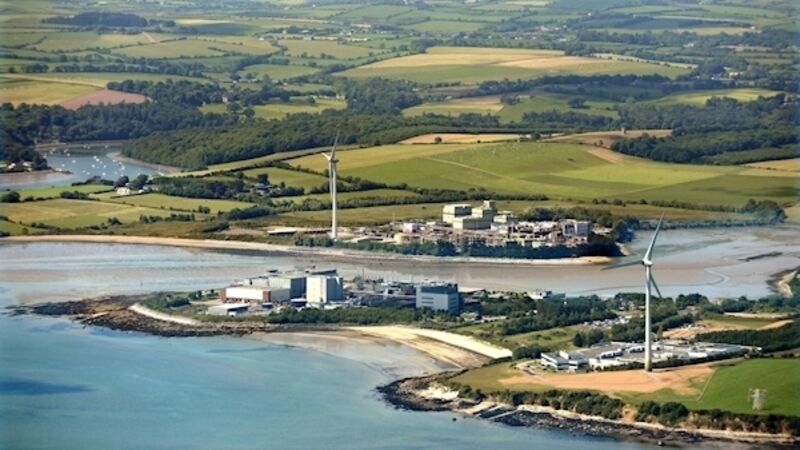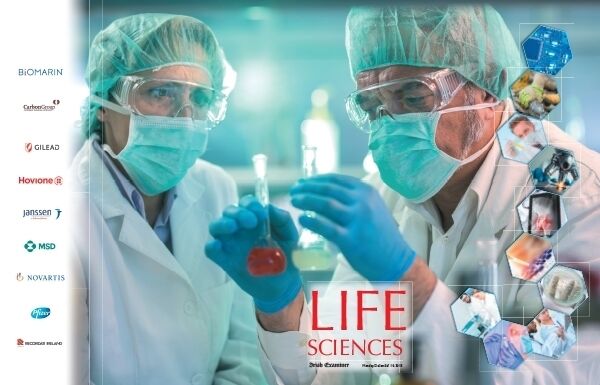Life Sciences: Vital contribution to the nation’s economy


Employing more than 30,000 people in Ireland and worth some €45 billion in exports, the Life Sciences sector is a high-profile as well as an extremely important element of the Irish economy.
A crucial element of the ongoing growth of this booming and highly lucrative sector is much-needed government support for — as well as investment in — an improved road infrastructure.
Some much-needed developments in the area of infrastructure are underway in Cork, says Conor Healy, chief executive of the Cork Chamber of Commerce.

“The Dunkettle Interchange project is progressing well,” Healy observes. “Early works are underway.
"The contractors have been appointed for the project and it is very much on track to be delivered by 2021.
“I welcome that. It’s a positive development, and it opens up — from a transport point of view — the wider region, improving connectivity in Cork and to the wider Munster region."
However, he emphasises, developments in terms of the long-awaited plans for the crucial N28 route, are giving rise to concern — under this project, Cork County Council is proposing to upgrade approximately 12.5km of the N28 National Primary Route, from the N28/N40 South Ring Road Bloomfield Interchange to the Port of Cork in Ringaskiddy.
“What we’ve seen since last year is that the project has been approved.
"This road is an issue which concerns the Life Science sector, the business community in general and thereby, the Chamber of Commerce. Any delay could potentially cause significant damage to the plans,” he warns.
The N28 is the crucial connection to one of the key national industrial zones.
"This is dominated by the Life Sciences sector which is a major contributor to both the national and the local economy as well as to the development of the Port of Cork.
“Anything that would prevent the N28 project going ahead would be severely detrimental to the local economy,” warns Conor Healy, says, while pointing out that in addition this artery is also a “very major route from a community perspective,” with thousands of people moving daily between the greater city region and the major population centres of Carrigaline, Douglas, Rochestown and Ringaskiddy.
Commuter challenges
Little Island itself continues to pose a significant challenge to commuters in terms of access and traffic movement, he added.
The area currently serves about 10,000 employees, based in a range of industries including the Life Sciences sector.
“Some initial works are taking place on the island to improve traffic movement, with consultations taking place, and a range of options for the longer term,” says Healy who adds, however, that given the huge economic importance of the Little Island facility, significant improvement is a major priority for Cork Chamber of Commerce.
“These solutions need to be a continuation of improved traffic movement and to also incorporate a significant modal shift to public transport. This requires major improvements in the bus and rail service,” he observes.
The €1bn M20 project, which links Cork and Limerick has been approved and it’s hoped, it’s all systems go for the project, says Healy.
“In recent weeks, the Cork and Limerick Chambers of Commerce have met with the M20 project team to highlight the importance of the project moving ahead without delay.
“The Cork-Limerick route will be a brand new motorway. It is a priority in the National Development Plan to get it underway,” Mr Healy explained, adding that it’s expected that initial contracts will have gone to tender and be approved by year end, with the project ready to start in January 2019.
“It is absolutely essential that this project stays on schedule over the coming years, to ensure that the motorway is completed in as timely a manner as possible,” he emphasises, while pointing out that significant growth continues to be a hallmark of the Life Sciences sector in Cork, with capital investment and expansions of work-forces generally, taking place across a large number of companies based in the region.
“It’s absolutely essential that we provide the appropriate environment to facilitate that growth,” Mr Healy said, adding that in that context more progress also needed to be made in the area of accommodation availability.
Greater progress needs to be made in the provision of suitable housing and accommodation options for a growing workforce, many of whom are moving to Cork to take up employment.
There was also, he warned, a growing need for “significant changes” in our public transport infrastructure provision across the greater cork city region.
“While we welcome government commitment in the National Development Plan in this regard, it is essential that infrastructure in Cork is prioritised.”
Education and skills provision also needed to be kept on track, he emphasised.
”While we welcome the influx of talent to the region, we need to ensure that we continue to produce the appropriate skillsets from our local third-level institutions.”
This could only happen, he added, if the required government investment was provided to support Cork’s colleges.
This was important in terms of the very significant contribution made by the life sciences sector to the local economy, he warned.
“The Life Sciences sector in particular, also provides major sub-supply opportunities. It is a very significant contributor to the economy in terms of business support for the sector, and has been for many years,” he says, adding that Pfizer, which was the first global pharmaceutical company to invest in Ireland/Cork in 1969 next year celebrates 50 years since that initial investment.
That initial project was the catalyst for significant investment by a wide range of global pharma leaders in subsequent years, he pointed out.















